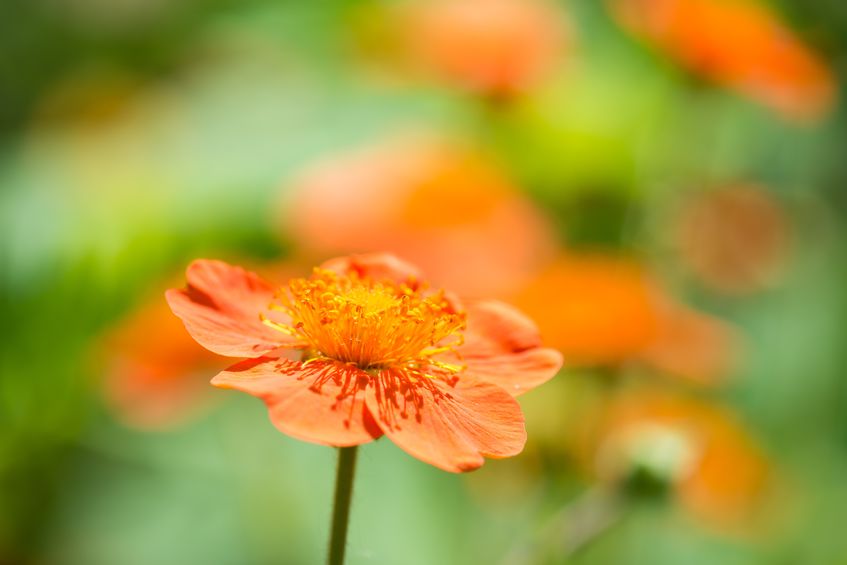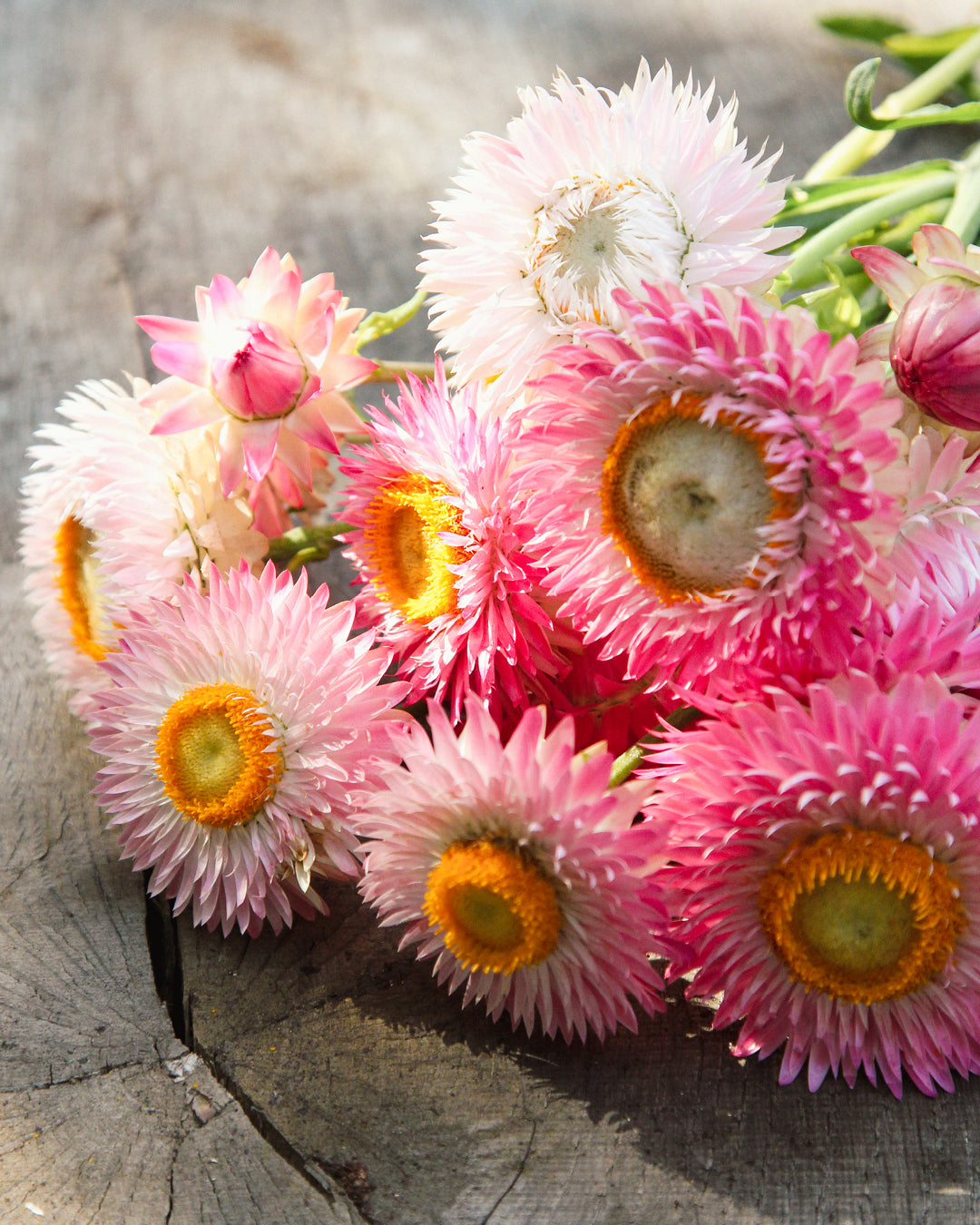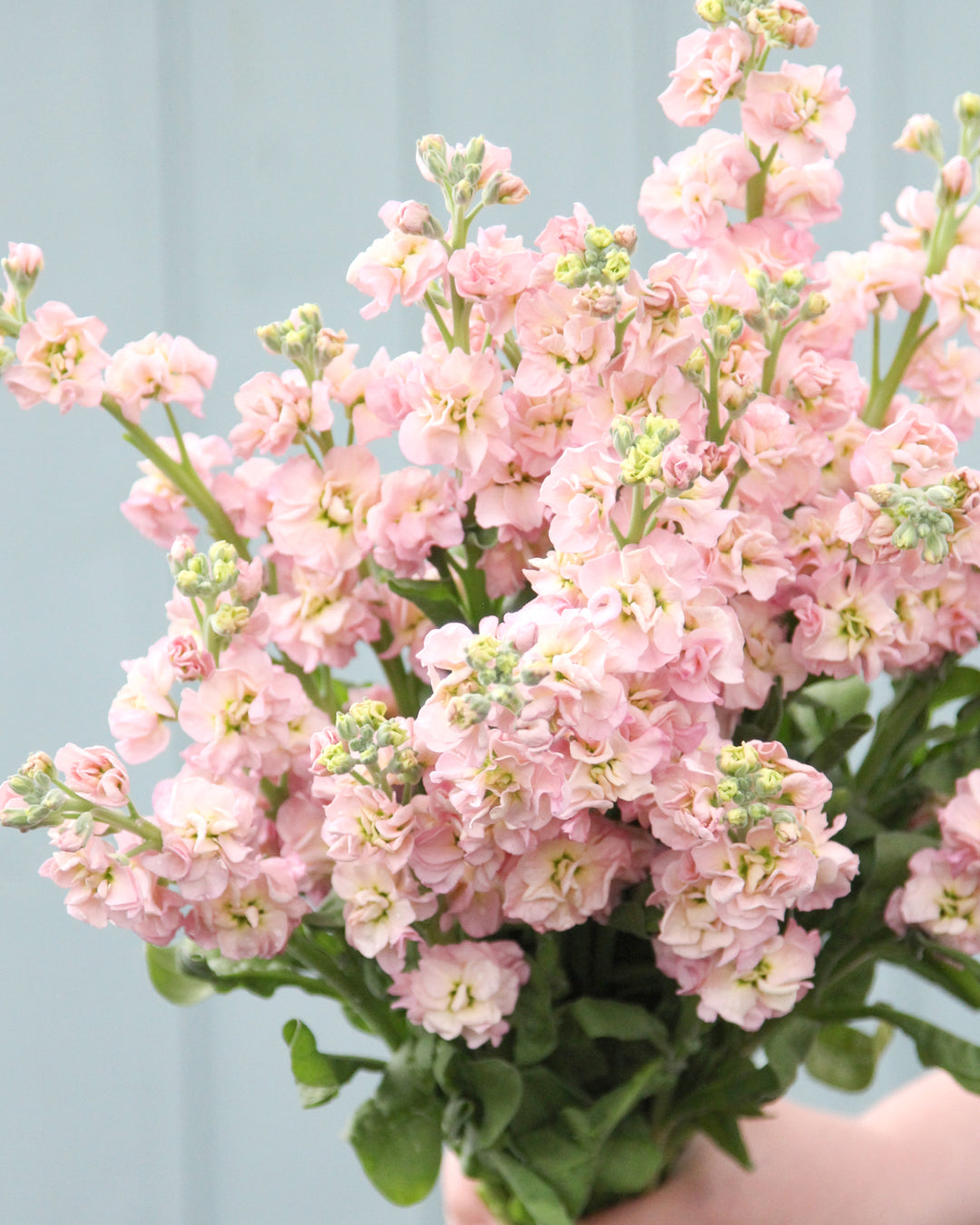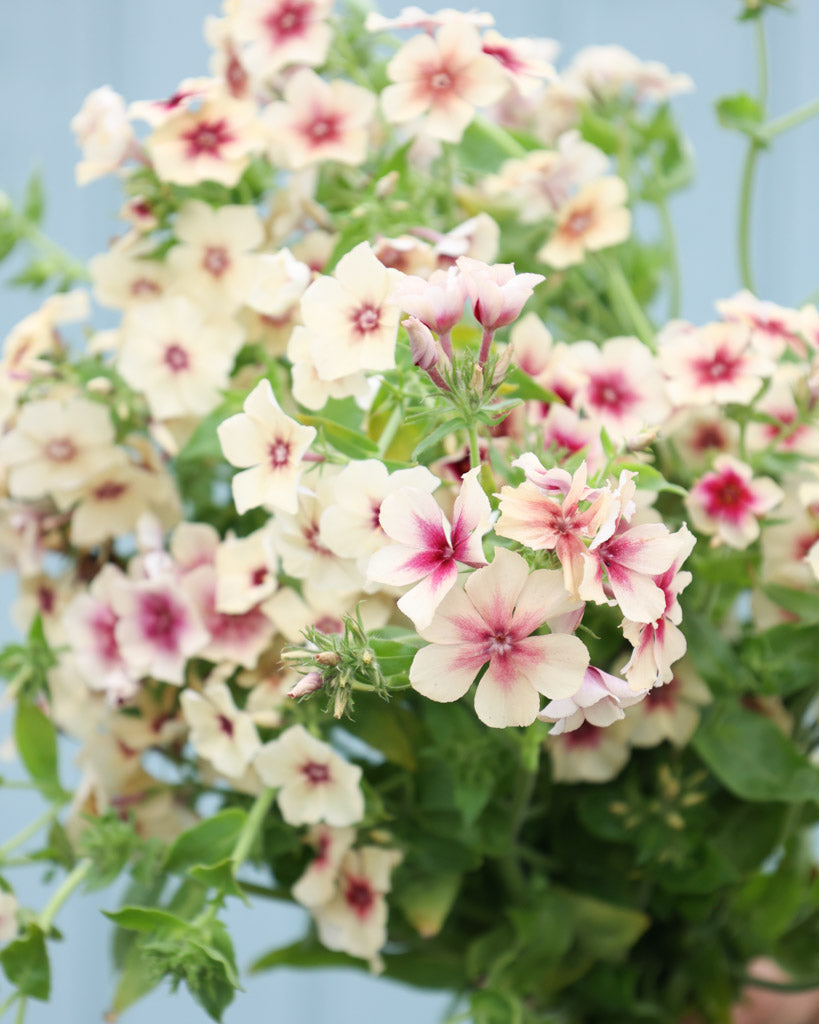Carnation root (Geum coccineum)
Many gardeners know it as a stubborn, troublesome weed. However, this particular species stands out for its bright, pure, and invigorating orange blossom color, which is extremely rare among perennials. However, other colors are also available through breeding. Whether in natural gardens, along watersides, in borders, or at the edge of woodland, the avens, a member of the rose family, cuts a fine figure everywhere.

Growth form
The upright, herbaceous plant forms clumps. It has approx.
10–30 cm long, pinnate and toothed, mid-green leaves and both branched and unbranched stems. The carnation root reaches a height of 20–60 cm and a spread of 60 cm.
blossom
Depending on the variety, its flowering period is from May to July. The flowers are flat, bowl-shaped and covered with yellow stamens. A bright orange-red is the most prominent color among the approximately 5 cm large flowers. The roots of the carnation root have a faint clove scent.
Location requirements
The avens prefers a sunny to partially shaded location with nutrient-rich, moist, but well-drained soil. You need 16 plants per square meter.
Care
This hardy and robust plant is relatively easy to care for. It only dislikes waterlogging and cannot tolerate it.
is winter hardy.
Other species and recommended varieties
'Borisii': It blooms in bright orange-red and grows to about 30 cm tall. It is one of the most popular and well-known varieties of carnation root.
'Red Wings': This approximately 40 cm tall variety has scarlet, semi-double flowers with yellow stamens.
'Dingle Apricot': It grows to 20 cm tall. Its flowers are light apricot-colored with darker markings.
'Diana': This variety is characterized by its particularly large yellow flowers. It reaches a height of 20–30 cm.
Water avens (Geum rivale)
This hairy avens species forms umbels with bell-shaped, nodding flowers. The brownish-red sepals enclose pinkish-yellow petals. Because this species tolerates relatively high levels of shade, it can also be planted in gardens that are otherwise less flower-rich. Recommended varieties of this species include 'Bachelfe', with its greenish-white flowers, and 'Lionel Cox', which boasts large, creamy-yellow blossoms.
TEXT: Swantje Holtmann
















